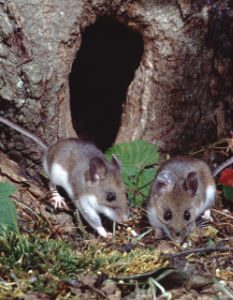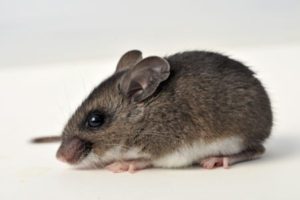DEER MICE! HOUSE MICE! REFUSE TO SHARE YOUR HOME
By Zachary Ciras on October 28, 2020.
 If you thought deer mice were called deer mice because they hung around in the same places as deer, you would be right, almost. Supposedly they got the name because their coloration and markings are similar to those of white-tailed deer – with a light-colored belly and legs, and a tawny brown upper body. And you might actually be dealing with the white-footed mouse instead, the deer mouse’s almost identical cousin (which gives you another clue about its coloration).
If you thought deer mice were called deer mice because they hung around in the same places as deer, you would be right, almost. Supposedly they got the name because their coloration and markings are similar to those of white-tailed deer – with a light-colored belly and legs, and a tawny brown upper body. And you might actually be dealing with the white-footed mouse instead, the deer mouse’s almost identical cousin (which gives you another clue about its coloration).
DEER MICE CAN CATCH CORONAVIRUS
As to where they hang out, the unwritten rule was that deer mice were more common outside and house mice were more common inside. That’s been changing and, in some areas, no longer applies at all. In these areas, deer mice can be just as common in homes as house mice. This is not a good thing since they are important reservoirs for Lyme disease which is spread by infected ticks. A high incidence of deer mice on your property, if combined with other conditions, could mean that you are at higher risk for Lyme disease transmission.
And now there is some evidence that deer mice can catch the coronavirus, at least in a lab setting. If you’ve been paying attention, you know that it’s not unusual for other animals to get coronavirus in certain situations. We’ve seen it in pet dogs, mink, and some zoo animals, for example. Whether deer mice can actually become a reservoir for COVID-19 in nature and transmit it to humans remains to be seen.
IT’S TIME FOR THE FALL MOUSE MIGRATION
This is the time of year that deer mice move into more sheltered nesting sites for the winter. If the mice that you are seeing around your home lately appear cuter and more cuddly, with big, dark eyes and large ears, you may be dealing with deer mice instead of house mice (see What Does a Deer Mouse Look Like?).
 The two groups of mice are basically similar in size and habits with some important differences. Both mice construct nests of shredded paper, insulation, furniture stuffing, or whatever they can find. Deer mice, in particular, hoard food in and near their nest sites; this may be the first indication of a mouse problem for the homeowner. Mice may collect and bring in pinecone seeds, acorns, beechnuts, etc. from outside, hiding the food in out-of-the-way places. Unfortunately, this stored food often becomes infested by food beetles and moths which creates a new pest problem.
The two groups of mice are basically similar in size and habits with some important differences. Both mice construct nests of shredded paper, insulation, furniture stuffing, or whatever they can find. Deer mice, in particular, hoard food in and near their nest sites; this may be the first indication of a mouse problem for the homeowner. Mice may collect and bring in pinecone seeds, acorns, beechnuts, etc. from outside, hiding the food in out-of-the-way places. Unfortunately, this stored food often becomes infested by food beetles and moths which creates a new pest problem.
TAKE STEPS NOW TO ELIMINATE MICE AROUND YOUR HOME
Certain conditions in your yard or on your property can be attractants for mice. Spilled bird seed, pet food left outside, rotting fruit or vegetables, and overflowing garbage are the biggies. Along with the services of a pest control professional, cleaning up around your yard can greatly reduce mouse populations (see You Can Help With Your Own Mouse Problem).
Like house mice, deer mice can be controlled with either baited traps or rodenticides. Having a professional seal up openings that let the mice inside is a big help, too. At Colonial, we’re very familiar with deer mice and their control and our mouse exclusion and other work is guaranteed. Our technicians follow the COVID-19 safety guidelines and take great care to be sure customers are protected.
Give Colonial Pest a call today to schedule a mouse inspection and evaluation. For more information, see How Do I Know If I Have a Mouse Problem?